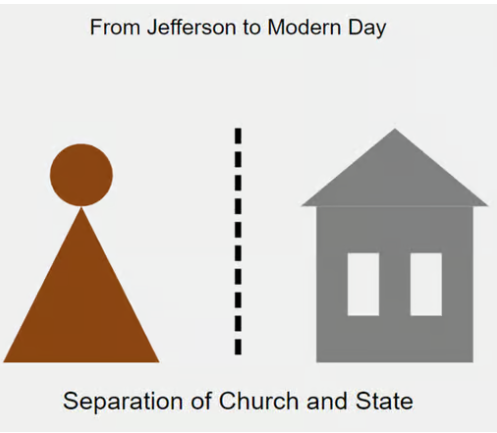Introduction
In 1802, Thomas Jefferson penned a letter to the Danbury Baptist Association, introducing a metaphorical “wall of separation between Church and State” that would forever shape American democracy. This simple yet powerful concept has become one of the most debated and influential principles in American constitutional law and political discourse.
The separation of church and state has served as a cornerstone of American democracy since the nation’s founding, evolving through centuries of legal interpretation, social change, and political debate. From Jefferson’s time to the present day, this principle has both protected religious freedom and prevented government establishment of religion.
Thesis: The separation of church and state in America has evolved from Jefferson’s initial conceptualization to become a dynamic and sometimes controversial principle that continues to shape modern political discourse, legal decisions, and social policy.
Historical Foundations
Jefferson’s Vision and Early Implementation
The roots of church-state separation in America trace back to the colonial experience of religious persecution and the Founders’ determination to prevent similar issues in the new republic. Jefferson’s perspective was shaped by his observation of state-established churches in colonial America and their negative impact on religious freedom.
The First Amendment’s Establishment Clause and Free Exercise Clause provided the constitutional framework for separation, prohibiting Congress from establishing a state religion while protecting citizens’ right to practice their faith freely.
Constitutional Framework and Early Supreme Court Cases
The Supreme Court’s early interpretations of church-state separation were relatively limited in scope. However, the 1947 Everson v. Board of Education decision marked a turning point by incorporating the Establishment Clause to the states through the Fourteenth Amendment.
This landmark case set the stage for more comprehensive judicial scrutiny of government involvement in religious matters, establishing the modern framework for analyzing church-state issues.
Modern Interpretations and Challenges
Contemporary Legal Tests
The Supreme Court has developed several tests to evaluate potential church-state violations:
- The Lemon Test (1971): Examines government actions for secular purpose, primary effect, and excessive entanglement
- The Endorsement Test: Focuses on whether government actions appear to endorse religion
- The Coercion Test: Evaluates if government actions compel religious participation
These tests have been applied to various contexts, from prayer in schools to religious displays on public property.
Current Controversies and Debates
Modern challenges to church-state separation include:
- School voucher programs and religious education funding
- Religious symbols in public spaces
- Healthcare policies affecting religious institutions
- Religious exemptions in anti-discrimination laws
Impact on American Society
Educational System
The separation principle has significantly influenced American education, particularly regarding:
- Prayer and religious instruction in public schools
- Teaching of evolution versus creationism
- Religious holiday observances
- Use of school facilities by religious groups
Contemporary debates often center on finding the appropriate balance between accommodating religious expression and maintaining secular education.
Public Policy and Social Services
The principle affects various aspects of public policy:
- Faith-based initiatives and government funding
- Religious organizations’ role in social services
- Tax exemptions for religious institutions
- Religious accommodations in the workplace
Resources for Educators and Students
Understanding church-state separation requires careful analysis of historical documents, legal precedents, and contemporary issues. The Social Media Regulation Activities and Worksheets Bundle provides comprehensive materials for exploring these topics in depth, including:
The Separation of Church – Bible – History- Assessment – Activity – Color Book
Conclusion
The separation of church and state remains a vital principle in American democracy, continuously adapting to new challenges and societal changes. From Jefferson’s initial conception to modern interpretations, this doctrine has helped maintain religious freedom while preventing government establishment of religion.
The ongoing debates and legal challenges surrounding church-state separation demonstrate its enduring relevance in American society. As new questions arise about religious liberty and government neutrality, the principle continues to evolve, shaped by changing social norms, technological advances, and emerging legal interpretations.
Understanding this complex relationship between religion and government remains crucial for maintaining the delicate balance between religious freedom and secular governance in American democracy.

